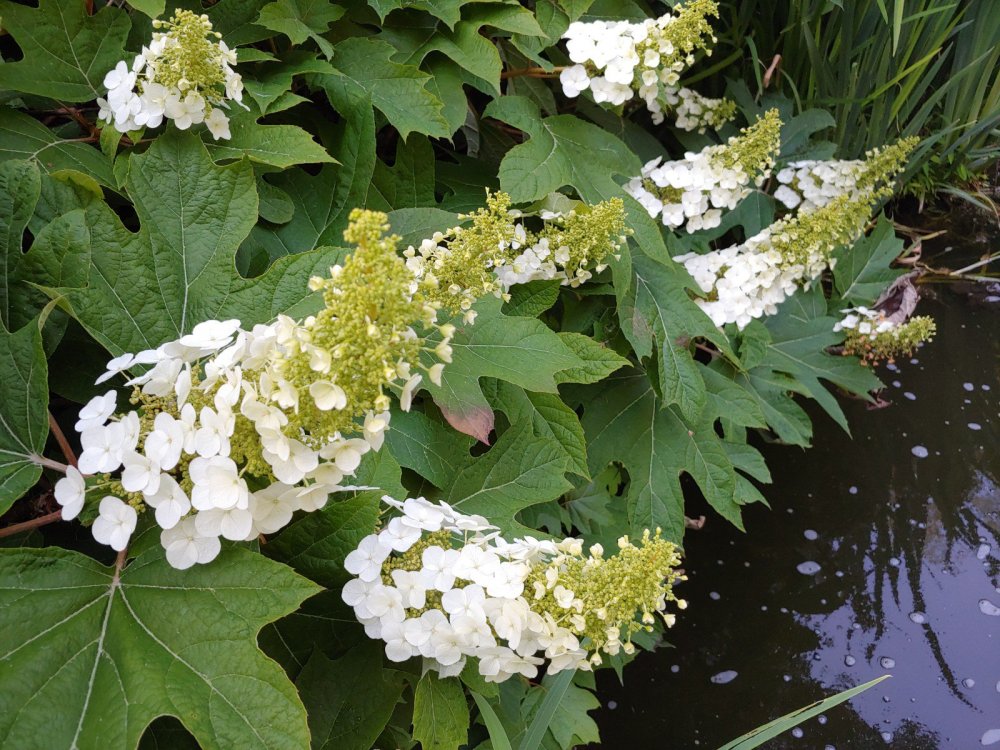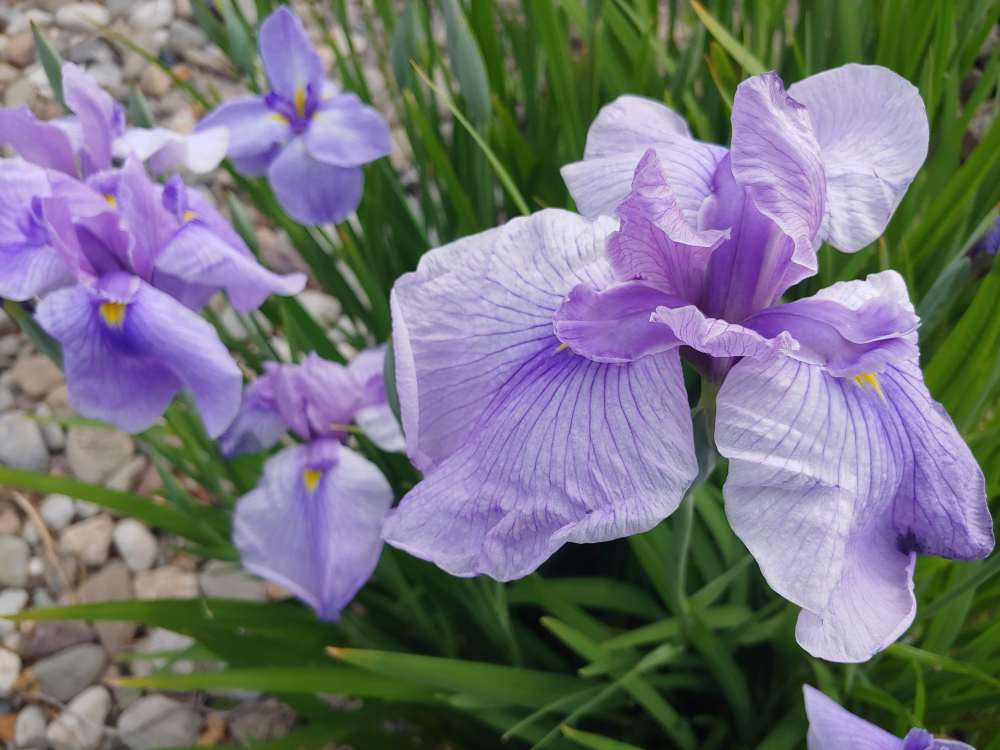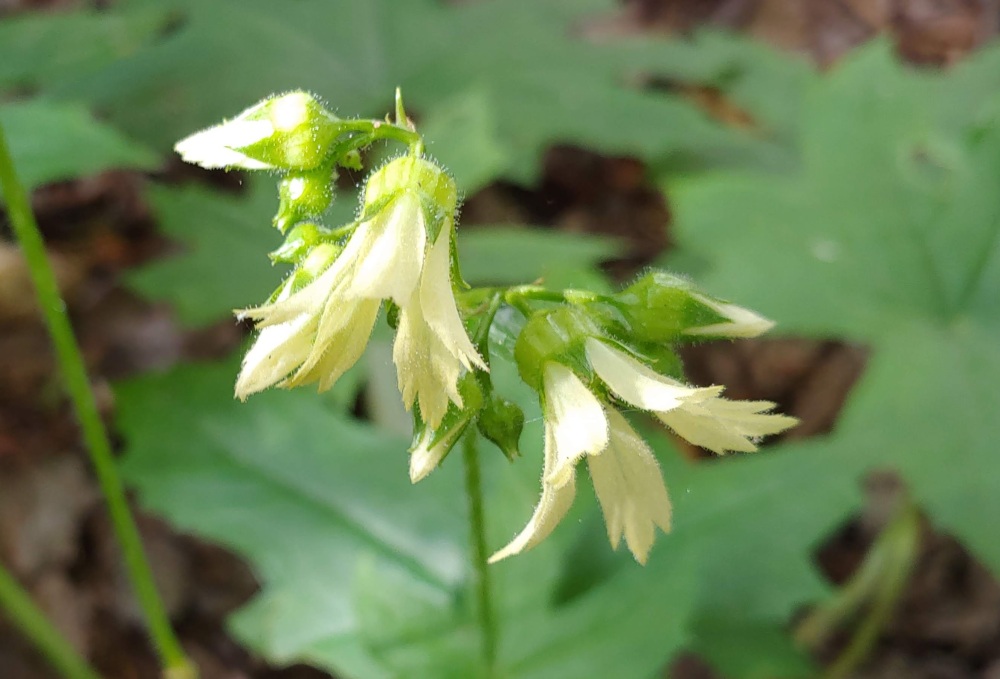In spring, partially submerged boulders bordering the koi pond disappear beneath a dense planting of irises (yellow flag and various Japanese irises, below), sweetflags (Acorus calamus variegatus), and variegated cattails. A wide spreading Oakleaf hydrangea (Hydrangea quercifolia, below) sprawls at the water’s edge with exceptional vigor and unusually large leaves, with roots cooled by the pond though they are well above the waterline.



Other parts of the garden also disappear under the cover of wide spreading foliage, and it is now that my wife becomes most agitated as stems of hostas and Japanese Forest grass arch over to partially obstruct the stone paths. Already, large leaves of a blue-green hosta have been pruned (butchered, I say) for the minor offense of leaning over a path that is barely used. I no longer complain, at least not loudly, since I understand that it brings no positive result, and I am far to the other extreme. I would allow stems to obstruct paths completely, and only then would anything be cut back. Reluctantly.


When planting along paths, my favored choices are often somethings with large leaves. Anything, and it is convenient that many large leafed plants are best suited to the shade that has overtaken much of this garden in recent years. A few Asian mayapples (Podophyllum) and several newly planted (in autumn) Peltoboykinia watanabei (no common name since it is not common, above) are coming along nicely, and while these will not reach mature growth this year, I expect my wife will be chopping stems a year from now.
Asian mayapple? Are there native mayapples in your region too?
There are native mayapples in many eastern US forests. The woodland beside my home was thick with them until the adjacent landowner logged many tulip poplars. The increased sunlight stunted them, though most are recovering after a decade.
It is a plant that I have heard of but never seen, sort of like the ‘prettier’ trilliums (although I have noticed that some of ours are prettier than I remember).
I have a peltoboykinia that I picked up at Tower Hill Botanical Garden a few years back. It’s in a shady bog area and grows very well there. I remove the flowers since they are insignificant. It has maintained a tidy clump, slowly expanding, so you might not have to whack it after all. This plant deserves to be more widely grown.
Everything growing near the garden’s paths gets whacked if a leaf strays an inch too far.